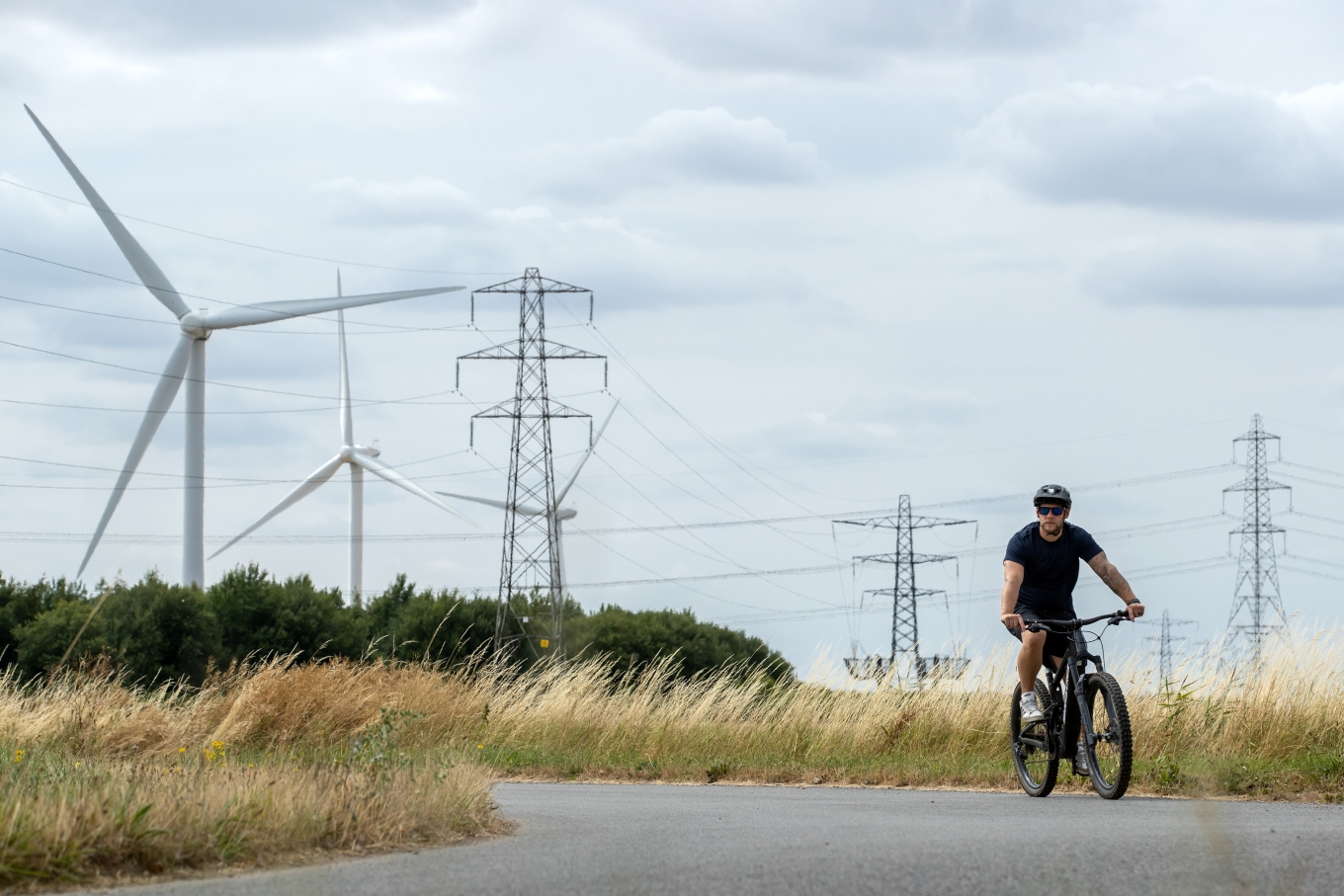How to prevent microshocks
Microshocks can sometimes occur under overhead lines in certain circumstances. In most cases there are easy ways to prevent these occurring. Below we discuss some specific cases as well as general advice.
Bicycles
Microshocks can occur when riding a bicycle underneath a high-voltage power line. If your skin is in contact with a metal part of the bicycle as you ride underneath the overhead line, then no charge can build up between you and the bicycle, and you should not experience any microshocks. But if you are electrically isolated from the bicycle - e.g., you are holding rubber handlebar grips, or are wearing insulating gloves - then a charge can build up. This can then discharge as a microshock. The most common place for this to happen is either on the fingers if they brush against the brake lever, or on the inside of the upper thigh, as it comes close to the top of the seat pillar just below the saddle or to the saddle rails once each pedal revolution. These microshocks do not cause any harm to the body or have any known lasting effects.
Microshocks are avoidable by the very simple measure of keeping a finger touching the brake lever (or the bare handlebar either side of the handlebar grips, or a metal bar end, or any other metal part of the bicycle) for as long as you are under the power line. You don't need to grip tightly, as long as there is firm contact (light contact runs the risk of experiencing microshocks).
If you experience problems on a bicycle under a power line that seem worse than the description above, please contact us. Additionally, we would like to share this information as widely as possible, so if you are a member of a cycle forum or group, please share this information with your members.

Electric fences
Electric fence tape is designed to be an effective conductor of voltage. If electric fences are installed very close to overhead lines, the electric field that the overhead line produces can induce a voltage on the tape.
The magnitude of the voltage principally depends on the voltage of the transmission line, and the magnitude of induced charge is determined by the wire size/diameter, its’ distance from the transmission line conductor, and the distance it runs in parallel. These charges, if large enough, can result in microshocks being perceived if the electric fence is touched, even when de-energised.
There are a number of ways this can be mitigated:
- Earthing unenergised electric fences to remove the charge before they are touched is the simplest way to mitigate microshock occurrence. Temporary earths can be used when installing or moving de-energised electric fences to ensure no residual voltage is on the conducting fence tape.
- Wearing insulating gloves can allow these electric fences to be moved without perceiving any microshocks.
- Avoiding long stretches of parallelism between the fence and overhead line and, preferably, installing fences at right angles to the line.
General
Microshocks are generally easy to avoid, if you know how. Microshocks are rare, but if you have received one in a particular area, the following advice can help avoid receiving further microshocks.
- Touching objects with the palm of the hand, rather than fingertips. This spreads the charge over a larger area, reducing the perception of the microshock.
- Wearing gloves when handling conductive objects under overhead lines. In most instances the material of the glove increases the distance between the skin and object enough to prevent a spark occurring and therefore a microshock.
- Similar to the advice for bikes, when walking under a line if you keep a firm grip of the conductive object you are holding, this will prevent a microshock from occurring.
If you do receive a microshock and would like to discuss this further, please contact our Helpline using the details at the bottom of the page.